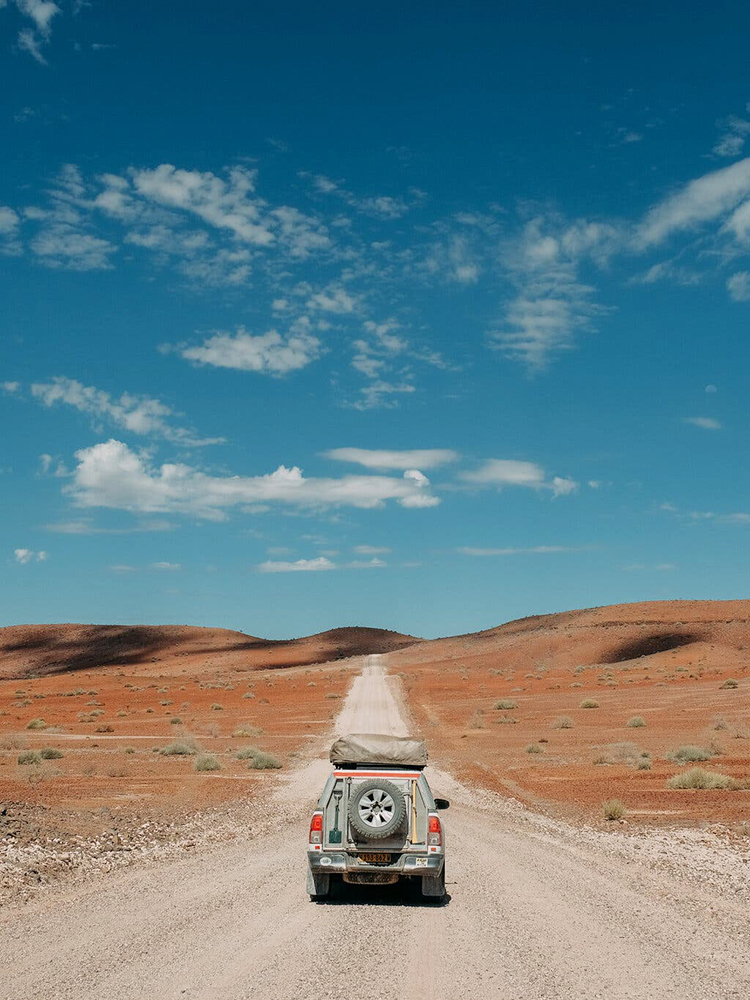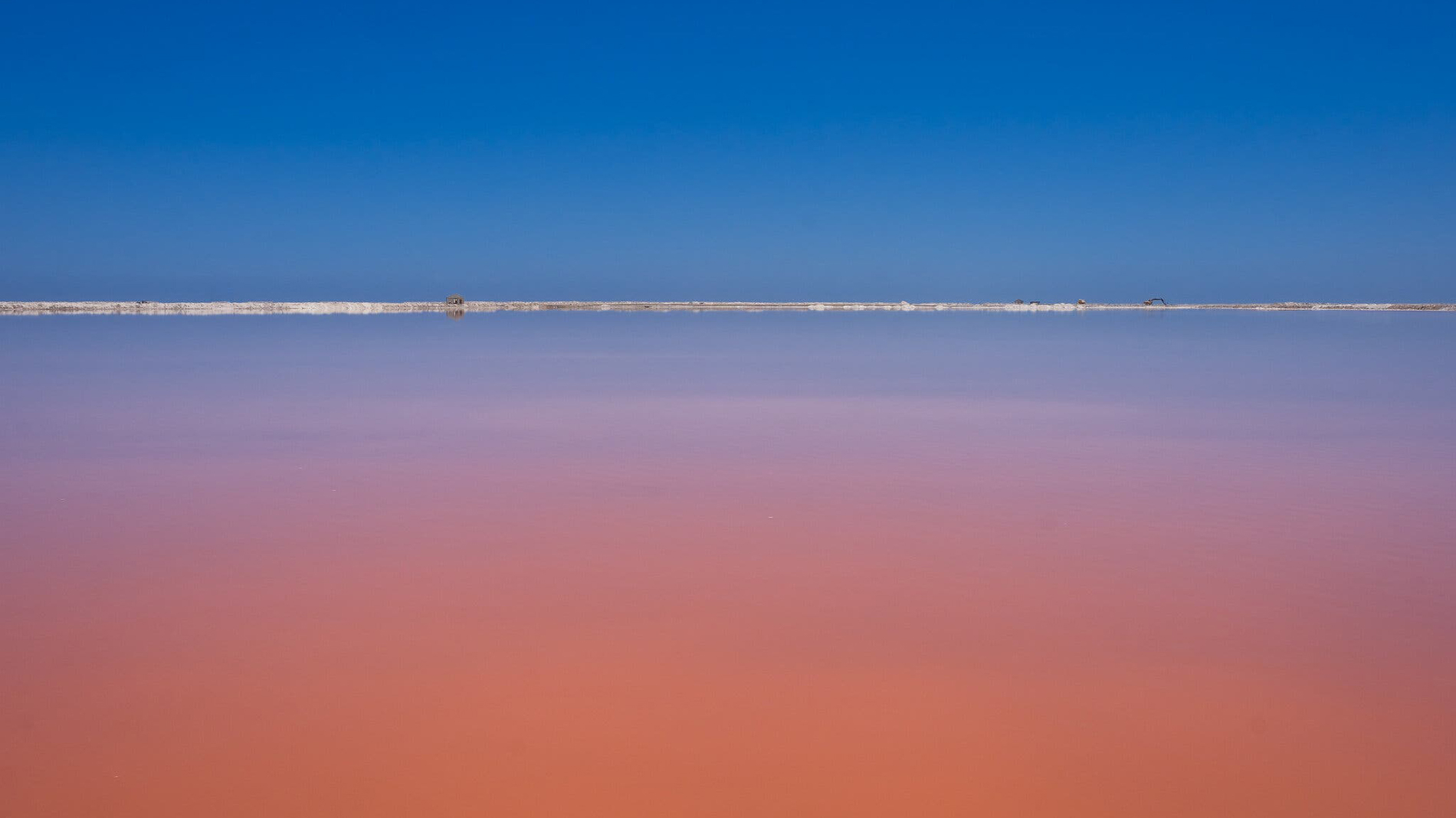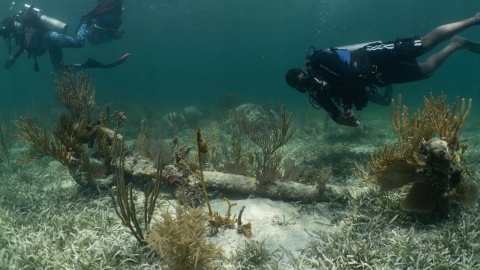We drove for four hours without seeing another ghost. No people. No cars. Just a strange, empty nothingness stretching south to the horizon. To the left, desert; to the right, ocean. A road of salt and sand stitched the left and right together. Under the overcast sky, sand-sea-road blurred into three long, indistinguishable gray-brown lines.

The C34 highway, along the coast of Namibia, is virtually indistinguishable from the surrounding desert.
We were travelling along Namibia’s Skeleton Coast, a place said to be the end of the Earth. Looking through the dusty windshield, I thought the name was apt. The wild Skeleton Coast begins at Namibia’s northern border with Angola, and continues 300 miles south to the former German colonial town of Swakopmund, where bakeries and beer gardens still line the streets – and where, a century ago, thousands of Herero and Nama Africans were massacred by German soldiers.
The region holds a mix unlike any other on the globe – of cultures, landscapes and species – and at times, conjures images of a post-apocalyptic wasteland.
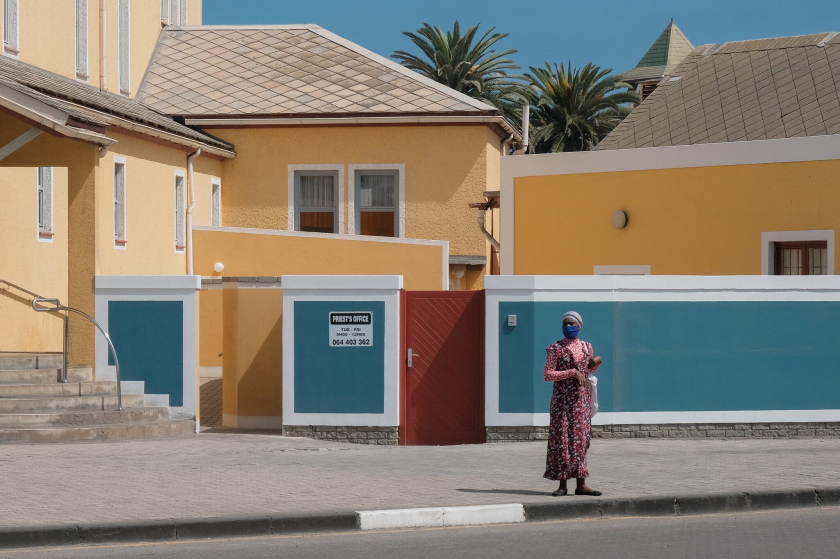
In 1892, the port town of Swakopmund was established as a colony of the German Empire, and the German language and architecture still dominate the area. Two thousand Herero tribesmen were killed in concentration camps run by the German army during the Herero Wars of the early 1900s. In the years that followed, the town became a tourist destination for Namibians, who were predominantly white.

A house in Swakopmund.
A year earlier, we had packed up our lives, left our homes and jobs in Seattle with plans to travel around the world, only to have everything abruptly turned upside down by Covid-19 just weeks into our first trip.
As things slowly reopened in late 2020, we decided that if we were careful, we could still resume our previous travel plans. So the questions were: Which countries are currently allowing US citizens to enter? (Very few). Where would it be safe to go, judging by the number of Covid-19 cases, testing requirements, and mask requirements? (Even fewer). And most importantly, where would we not be a burden on the host country’s health system if we were to get sick?
Namibia quickly shot to the top of the list. With one of the lowest population densities in the world, and the ability to travel independently, it seemed like the perfect choice. Little did we know how amazed we would be by the vast and varied landscape.
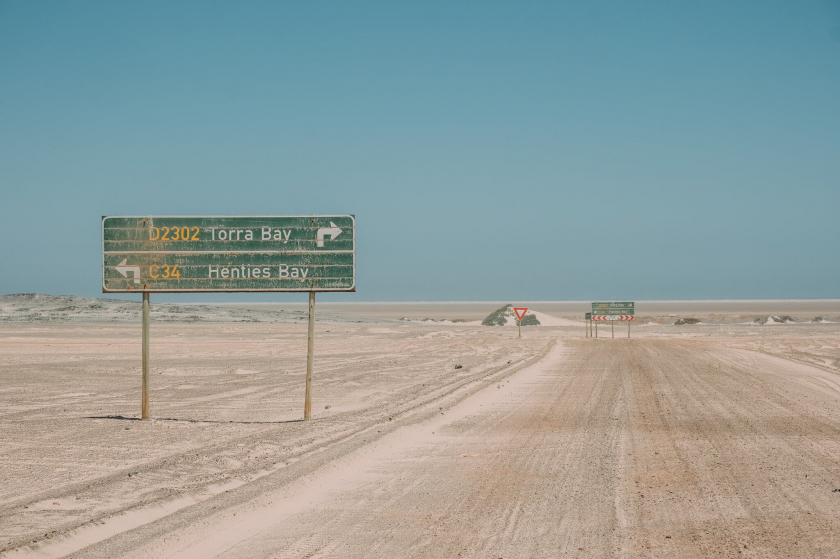
Road signs along the C34, also known as the Skeleton Coast Road.
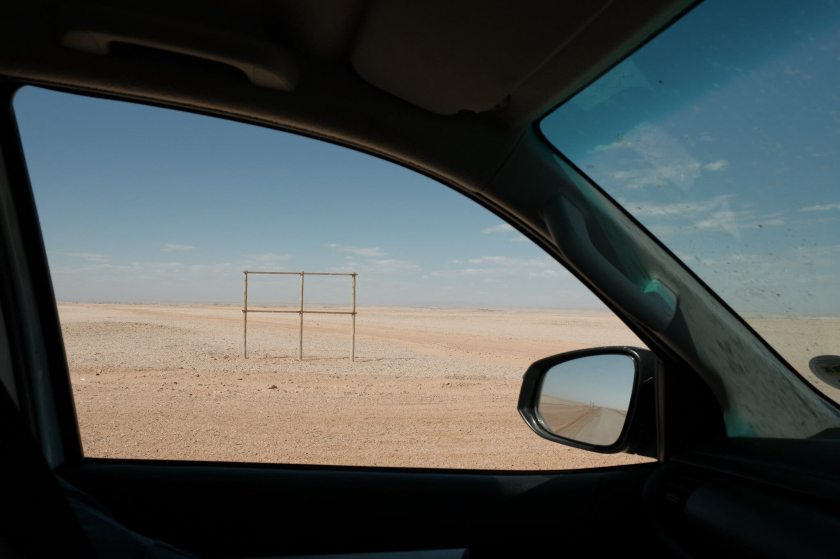
Namibia is one of the most densely populated countries in the world, with just three people per square kilometer.
Before choosing Namibia as our next destination, I knew very little about the country, so we immediately set out to learn about Namibia’s history and geography. When I found the Skeleton Coast, reading stories about shipwrecks, strange landscapes and 20th-century diamonds, I was completely captivated. The wildness, the silence, the unknown mystery – all of these things lit up my imagination, and I knew I had to experience and photograph this place.

Ugab Gate, the southern entrance to the Skeleton Coast, is decorated with images to warn of the dangers and harsh conditions that await travelers on the other side.
The entrance gate to Skeleton Coast National Park, near the Ugab River, is guarded by two towering skulls and crossbones and a whale rib cage. They stare as if in warning: “Abandon hope, visitors.”
We held our breath as we drove into Skeleton Coast, praying that our rented Toyota Hilux – our home for the past few weeks – wouldn’t suddenly blow a tire; and that we wouldn’t be eaten by the beach lions; for there was no longer any human territory ahead.
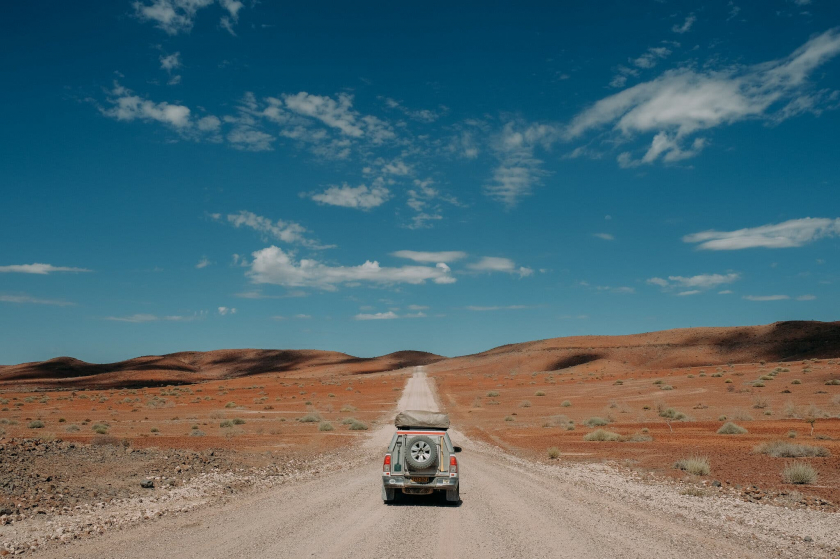
Head west from the Springbokwasser town gate into Skeleton Coast National Park.
The desert is dry and barren, and the endless march leads to the giant waves of the Atlantic Ocean - where sailors, ships, planes and animals have perished. The wrecks of cargo ships and the white bones of the wrecks still remain as reminders of the harshness of this place. It is a harsh land, with little growth, and danger lurks everywhere: from the desolate mountains to the dense coastal fog.
Tourists are often drawn to the shoreline, which is littered with shipwrecks. Although only a few of these survive, the truth is that hundreds of ships met their end on the Skeleton Coast, slowly being swallowed by the natural environment.
To the far north, the remains of the freighter Dunedin Star remain. And the British ship Blue Star, which sank and drifted ashore in 1942, leaving 106 passengers and crew completely stranded. Or a plane and a tugboat, whose crew perished before rescue could take place. To the far south, the freighter Eduard Bohlen, which ran aground in 1909, is now only visible from above, lying more than 400 meters from land, a ghost ship surrounded by desert.
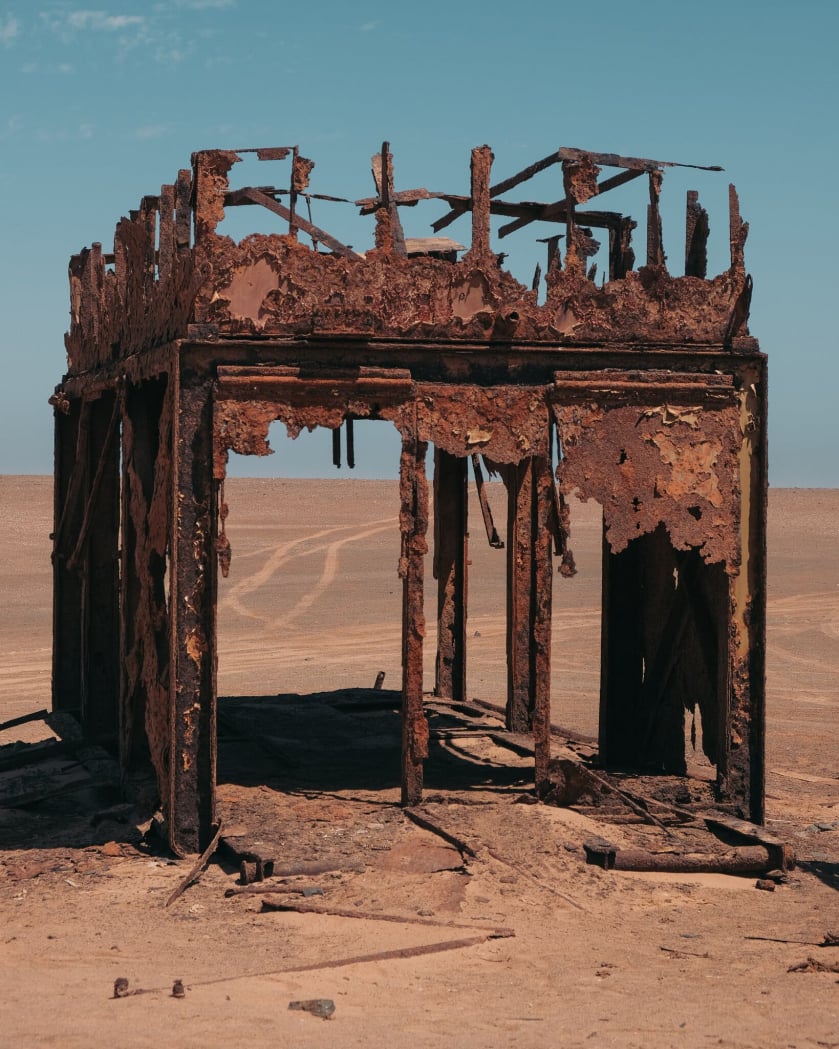
The remains of an old oil rig are corroded by salt, sand and sea air.

The skulls of an eland, an African antelope that looks like a cow, and other animals are fastened to a wooden post along the highway.
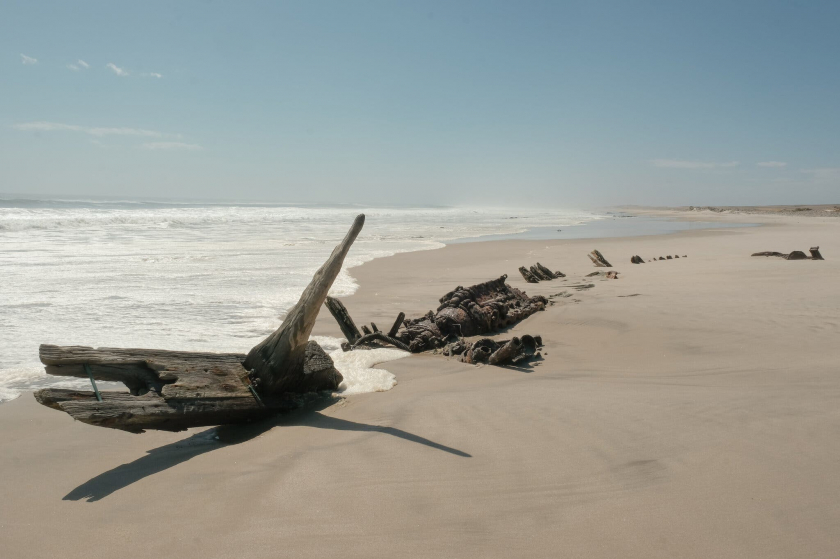
Remains of the South West Seal, a fishing vessel that ran aground in 1976.
We saw the remains of the South West Seal, a ship washed ashore in 1976, now just a pile of wood and rusted metal peeking out from the sand. Zeila, a fishing boat that ran aground in 2008 near Henties Bay, was also rotting but at least intact – now home to dozens of cormorants just offshore.
The few man-made traces here were in a state of disrepair: faded road signs, a rusty pile of abandoned oil rigs, slowly being eaten away by time, sand and sea air. I stopped every few minutes to take pictures, turning what should have been a six-hour trip into an eleven-hour journey.
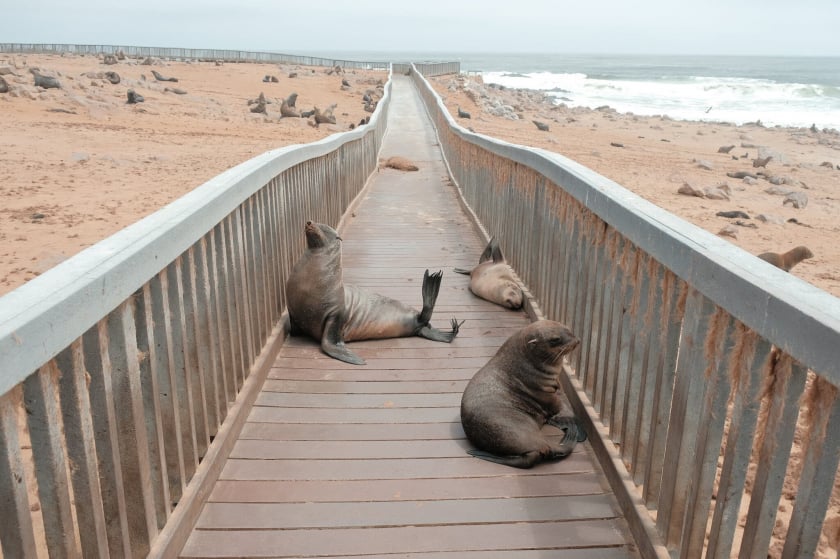
The Cape Cross Seal Sanctuary is home to one of the world's largest colonies of brown fur seals.
Along the way, we passed other oddities: the Cape Cross Seal Sanctuary, home to more than 200,000 smelly brown fur seals; or the Walvis Bay Salt Works, where giant salt pans, bright pink from the microalga Dunaliella salina, synchronised with the flamingos stalking shrimp in the nearby marshes. Makeshift tables lined the road north of Swakopmund, holding dozens of pale pink halite crystals, often flanked by rusty money boxes, waiting for the honest passerby to drop a few dollars for a treasure.
The barren landscape felt otherworldly, raw and majestic. It was both exhilarating and terrifying. The colours of the landscape and coastline slowly changed, the sand turning redder as we drove further south and into Namib-Naukluft National Park, home to the world’s oldest desert: the Namib.
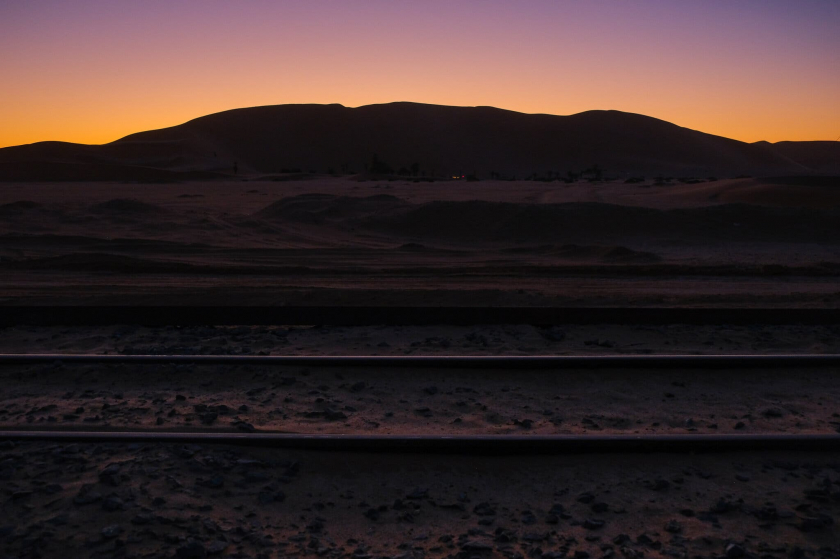
Dune 7 in the world's oldest desert at sunset. Measuring over 382 m high, it is the tallest dune in Namibia.
The young nation of Namibia only gained independence in 1990, but the Namib Desert has been around for at least 55 million years. For what seems like an eternity, towering sand dunes have been plunging into the raging sea.
The solitude and isolation we were seeking, in our search for a lonely part of the world, took us away from the pandemic that was raging everywhere, or the hard work of everyday life. Namibia made us feel small and insignificant, in a wonderful way. It was a vision I often craved, living in a world filled with instant gratification, and the never-ending battle to be the center of attention. And finally, the Skeleton Coast was a strange and beautiful reminder that we humans are powerless against time. That in the battle between humans and nature, nature always wins.
(Article and photos by Genna Martin, in the series "The World Through the Lens", published in the magazineNew York Times January 23, 2022)





